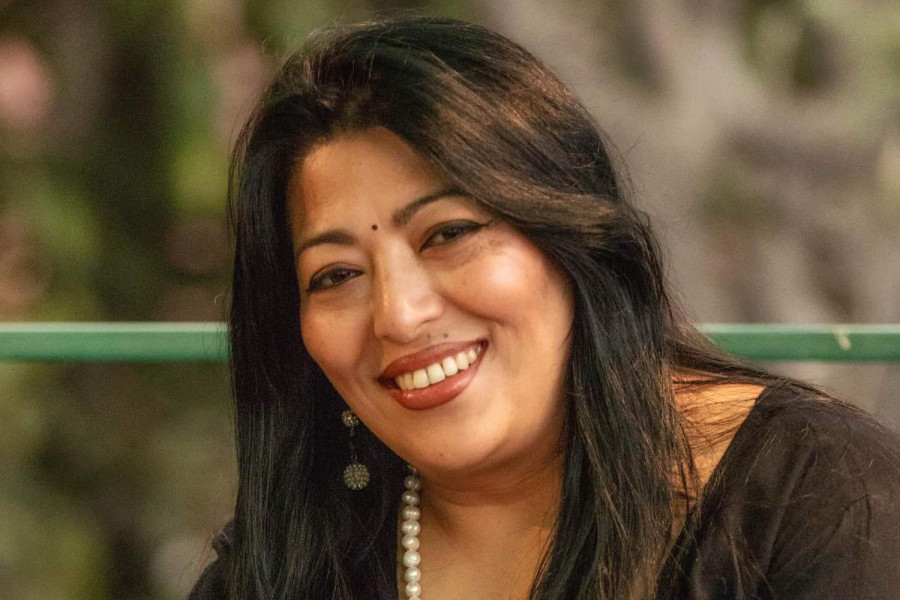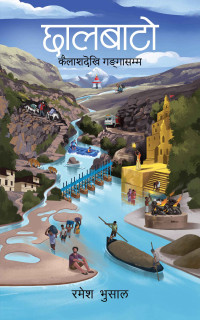Books
My essays combine real-life experiences with imagination
Writer Momila discusses her new book and the influence of iconic literary figures.
Rishika Dhakal
Momila Joshi is known for her poetry recitations and writings. Currently, she is the chairperson of Nepali Kala Sahitya Dot Com Pratishthan, a pioneering literary organisation in Nepal.
She has written two essay volumes and five poetry books, including ‘Paiyun Phulna Thalepachhi’ (1995), ‘Joonkiriharoo Orlirahechhan’ (1998), ‘Durgam Uchaima Phoolko Aandhi’ (2004), ‘After the Cherry Goes Blossoming’ (1996), and ‘Ishwar ko Adalat ma Outsider ko Bayan’ (2010).
In this conversation with the Post’s Rishika Dhakal, Momila discusses her recent publication, ‘Prashna Haru ta Ajhai Baki Nai Rahechan’.
What is your recently published book ‘Prasna Haru Ta Ajhai Baaki Nai Rahechan…’ about?
Writing often revolves around the writer's personal experiences. However, many aspects of their lives remain untouched. These unexplored subjects should be explored. As essayist Shankar Lamichhane says, “The scattered topics must be addressed.”
This book, consisting of 23 essays, seeks to shed light on the often unnoticed and overlooked aspects of our daily lives. Each essay is filled with symbols that capture the emotions and subtleties of our existence.
In my other book, ‘An Outsider in the Court of God’, the protagonists affirm the justice of the divine. In my recent book, the same character experiences heaven but then returns to earth, finding the eternal bliss of heaven overwhelming. Eventually, the character realises that life should encompass both—the celebration of happiness and the acceptance of sadness.
My essays combine real-life experiences with the perspectives of an imagined character.
How did you come up with the book title?
The title ‘Prasna Haru Ta Ajhai Baaki Nai Rahechan…’ holds personal significance. I see words as images and symbols, much like how the word ‘house’ instantly brings to mind a structure. When you start with a short sentence, it can expand into a long one with multiple layers of meaning. Similarly, my extended title is a symbolic collage that encapsulates the unanswered questions of one’s life.
The title suggests that, regardless of our efforts, the ultimate truth about life can never be fully understood. As the ‘Bhagavad Gita’ states, truth is never absolute and may become more elusive as we get closer to it.
In other words, the mysteries of our existence will remain unresolved. However, these unanswered questions are a sign of being alive and conscious and being conscious means that there will always be questions about those unresolved mysteries.
The quest for answers continues, and life progresses. This ongoing search for answers and the acceptance of unresolved questions add to the beauty of life.
In the preface to your book, retired professor, Govinda Raj Bhattarai mentions that your writing style is reminiscent of Laxmi Prasad Devkota and Shankar Lamichhane. How have these literary figures influenced you?
I am fascinated by Devkota's poetic essays and Lamichhane's narrative style. My writings are influenced by Devkota's "table talk" approach to essay writing and Lamichhane's imaginative conversations with unseen entities.
As someone who enjoys poetry, my essays often blend elements of stories and poems. The works of Bertrand Russell, Francis Bacon, and Nirma Verma have also influenced me and my writing to some extent.
All writings are essentially acts of deconstruction, evolving from old forms into new ones, much like life itself. My essays explore new experiences and offer a fresh perspective on understanding life.
What is the objective of the “I” character of your essay? What does it want to convey?
Using the “I” character in my essays reflects a modern writing style focused on self-revelation. Thus, it is natural for the “I” character to be part of this self-expressive approach.
The “I” in my essays does not necessarily represent my personal experiences. Since everyone in society uses “I” to refer to themselves, its use in writing is primarily a stylistic choice.
From a contemporary perspective, the “I” character acts as a vehicle for expressing ideas through a personal address, similar to the styles of Devkota and Lamichhane.
This writing style embodies a desire to celebrate life, value oneself, and seek existential significance in every moment.
This style does not challenge the hidden aspects of one’s identity but rather expresses a desire to communicate with it, to endure the pain quietly, and to persist.
Unlike my previous book, which focused on my personal experiences, this book generalises people's social experiences to provide a broader perspective.
Your previous works indicate a strong inclination toward essay writing. What motivates you to choose essays as your preferred medium for writing?
Essays allow me to write poetically while maintaining a clear narrative structure. They offer the flexibility to express complex ideas and emotions with freedom and depth. This balance between lyrical expression and structured narrative makes essay writing the perfect medium for conveying my reflections.
What role do women characters play in your writing?
I see myself first as a person and then as a woman. As a human being, I am deeply affected by the socio-cultural experiences that impact women.
Our significance as women goes beyond the title of "woman" and is reflected in our various roles, such as the special duties associated with motherhood.
In my book, there is a chapter titled ‘Naayak Bhumikamaa Uni’. In this chapter, Nayak refers to a female character who embodies heroism.
I chose to call her that instead of a Naayika because the concept of Nayak in my essay represents a broader role that any woman can embody. Through Nayak, I have tried to portray that even women can be the centre of their world and create their focal points.
In a nutshell, the essay aims to convey that women’s existence should not be confined to merely being a support to men; they can also take centre stage while asserting their existence and capabilities.
By portraying women in such a way, what are you trying to tell society?
I want women to seek love, assert their existence, and claim their potential.
The message I want to convey to women is not to remain perpetually in a role of mere compassion. While compassion is a valuable trait, it is important to recognise opportunities that allow for diverse expressions of leadership, personal growth and innovation.
Momila’s Book Recommendations
Thus Spoke Zarathustra
Author: Friedrich Nietzsche
Publisher: Ernst Schmeitzner
Year: 1883
I enjoy revisiting books I've read over time. I’m drawn to philosophy. This book which is beautifully written, is perfect for those interested in existentialism.
The Prophet
Author: Kahlil Gibran
Publisher: Alfred A Knopf
Year: 1923
I favour the Lalit Genre of essays. ‘The Prophet’, crafted in this genre, offers a literary journey that enhances self-awareness and personal connection, making it particularly beloved of readers.
Bhagavad Gita
Author: Vyasa
The Bhagavad Gita is a significant scripture that depicts the essence of human life. Regardless of how often one reads it, there seems to be an endless depth of knowledge to uncover, making it a text worth revisiting.
Laxmi Nibandha Sangraha
Author: Laxmi Prasad Devkota
Publisher: Sajha Prakashan
Year: 2015
Devkota’s essay collections are a refined piece of writing, which enriches both the heart and the mind. Its composition and essence are both exceptional.
Madhabi
Author: Madan Mani Dixit
Publisher: Sajha Prakashan
Year: 1983
The book explores a personal theory of love. Dixit’s work combines compelling arguments with beautiful prose. I regard this work as a true gem of Nepali literature.




 10.12°C Kathmandu
10.12°C Kathmandu










